

Motors©1996-1997 Papy http://www.multimania.com/papysoft/ & Jason (updated dimanche 05 mars 2000) |
[ home] [French societies] [security] [engines] [1977 - 1983 projects] [1983 - 1993 projects] [Paral'bol 1993 - 1996] [Céphéide 1996] [another sites]
[obtain a motor] [Coke] [dik-dik] [koudou] [bambi] [faon] [isard] [chamois] [caribou]
The motors used by GRETSS** & similar clubs in France are provided free of charge on presentation of a project to CNES / ANSTJ. This is just as well since some of the motors can cost in excess of 40,000FF ($8,000)
For some of them, you will find the thrust curve and charts giving you maximum
altitude, speed and culminating time in function of the front area and the launching mass
(d = 0.7).
In response to a number of accidents in the 1950's with amateur built rocket motors a law was passed in 1962 which prohibited the amateur fabrication of powder & explosives.
To encourage constructive rocketry based activities CNES freely provides professional motors for rocketry projects. This ensures that the amateur groups are not directly involved in any inherently dangerous work with pyrotechniques. As a result of this policy a large number of aerospace clubs have developed in France.
For a club to obtain a motor from CNES a project must be proposed to justify use of the motor. Specifically:
The development of the project involves an exchange of documents between the club & CNES / ANSTJ. Although this may seem very serious & formal it ensures that a good record is kept of the development of each project, which is very useful as reference for future projects.
The project proposal allows the club to reserve a motor. It is very important to send this document to ANSTJ as soon as possible, so that CNES can adapt its stock of motors to the needs of the clubs. A definitive assignment of a motor is made following a technical visit by a representative of the club some months before the launch campaign. The construction of the rocket must conform to a series of regulations laid down in a document distributed by ANSTJ. Specifically, the rocket must have some scientific objective, conform to safety requirements concerning stability & structure & be compatible with the launch range.
Usually an annual campaign is organised by CNES / ANSTJ in the last week of August for "experimental rockets", although depending on demand other campaigns could be held at other times in the year. The motor is prepared by a qualified pyrotechnician who places the igniter into the motor.
The choice of motor depends on the objectives of the project, although it does not necessarily depend on the complexity of the project. A simple, but well organised project is always preferable - it is not necessary to have an Ariane 5 style project (& we saw what happened to that) to obtain a motor!
Although this may all seem very serious & formal, a club is
above all a group of friends & a good atmosphere.
Forget about ANSTJ & document exchanges to get a motor, this is a case of "Just
do it".
GRETSS has often used cold water to propel rockets into the sky using the following simple recipe.....
This simple motor will easily take a rocket (or more often fins stuck onto the bottle) to 15m altitude.
As with all "experimental systems" take care, since the bike valve can easily make a nice dent in what ever happens to be underneath.
You can try other types of bottles, but be sure that they can take 10 - 15 bars of pressure. If not you will end up getting soaked..
A finally word. Wait until a nice warm day to launch your Cola bottle, since the rocket "exhaust" has a nice habit of sprinkling the launch team!
It was a mini rocket motor available since 1991.
It was used by GRETSS** for the first flight of Résolution.
This is a motor developed for regional launch campaigns of "mini rockets". As
such it is ideal for beginners projects.
It is an enormously popular motor despite its particularly violent thrust curve, often leading to launch accelerations in the 20-40g range!.
GRETSS** has used it for the last 2 flights of résolution, minifarad, prométhée iv, arcadia and cepheide
Technical details:
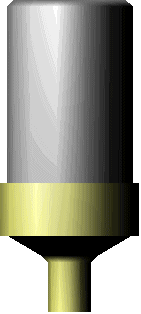
| Overall length: | 98.5 mm |
| Maximum diameter: | 43 mm |
| Total weight: | 215 g |
| Dry weight: | 150 g |
| Propellant weight: | 65 g |
| Total impulse: | 180 Ns |
| NAR classification | H300 |
| Average thrust: | 300 N |
| Burn time : | 0.6 s |
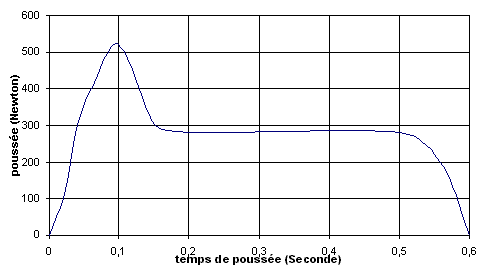
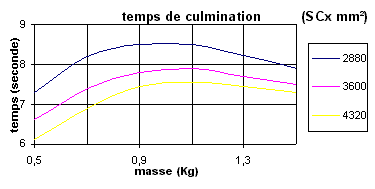
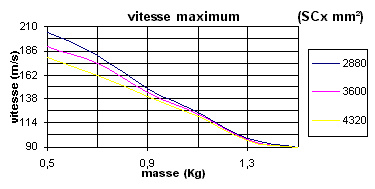
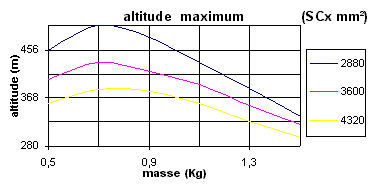
This was a motor developed for a cloud seeding rocket by the French fireworks manufacturer Ruggieri. It consists of a block of black powder wrapped in a plastic casing, delivered with a blue tube & oversized fins, plus a yellow nose cone too. Although it is at the lower end of the motor range, it does have the advantage that it costs 10 times less than comparable motors.
GRETSS** used it for Jtenpoz, Léviathan, Parathon'air and Ibex .
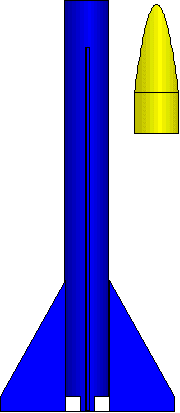
| Overall length: | 600 mm |
| Maximum diameter: | 63 mm |
| Total weight: | |
| Dry weight: | |
| Propellant weight:: | |
| Total impulse: | |
| NAR classification | |
| Average thrust: | |
| Burn time : |
An excellent end burning motor giving low thrust during a relatively long period (5.6 seconds) for an experimental rocket. Sadly, this motor is no longer produced.
This motor was used twice by GRETSS**, for faontasme and gretss connection
| Overall length: | 204 mm |
| Maximum diameter: | 63 mm |
| Total weight: | 1.07 Kg |
| Dry weight: | 0.6 Kg |
| Propellant weight: | 0.470 Kg |
| Total impulse: | 936 Ns |
| NAR classification | |
| Average thrust: | 192 N |
| Burn time : | 4.88 s |
This motor is ideal for small rockets in the 60-80mm diameter between 4-8kg mass. A rocket of this size can reach 1000 - 2000m altitude on this motor. Equally, it can act as an upper stage for a Chamois or Caribou first stage.
This motor was used twice by GRETSS** for Marie-Antoinette and Horus.

| Overall length: | 276 mm |
| Maximum diameter: | 60.7 mm |
| Total weight: | 2.047 Kg |
| Dry weight: | 1.397 Kg |
| Propellant weight: | 0.65 kg |
| Total impulse: | 1126 Ns |
| NAR classification | J566 |
| Average thrust: | 566 N |
| Burn time : | 1.98 s |
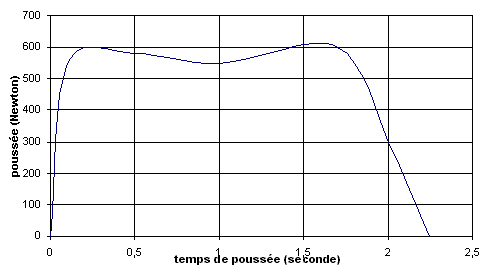
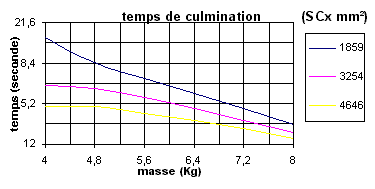
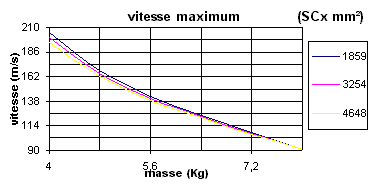
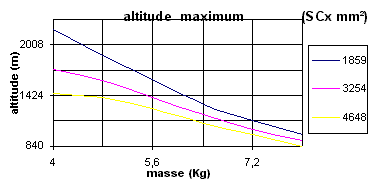
The first motor built specifically for experimental rockets, first used in 1973.
A 8-12kg, 90mm diameter (standard PVC tubing diameter) rocket can reach 1-2km altitude on this motor.
This motor is particularly suitable for delicate experiments, since the long burn time ensures that the launch accelerations are in the region of 10g.
GRETSS** used it for Pléonasme 2, Hilare, L'aplubel, PLQMTM, Storig, and Fox.

| Overall length: | 276 mm |
| Maximum diameter: | 90 mm |
| Total weight: | 3.4 Kg |
| Dry weight: | 2.3 Kg |
| Propellant weight: | 1.1 kg |
| Total impulse: | 2043 Ns |
| NAR classification | K842 |
| Average thrust: | 842 N |
| Burn time : | 2.52 s |
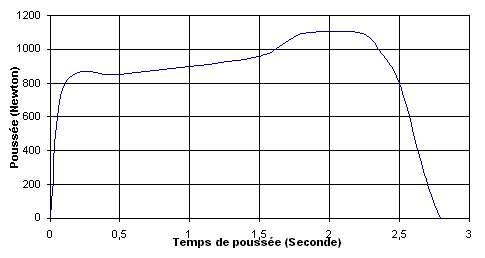
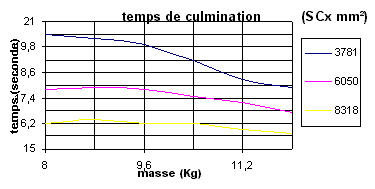
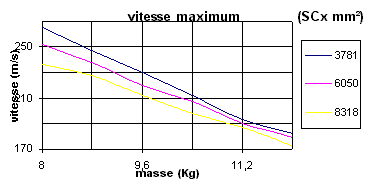
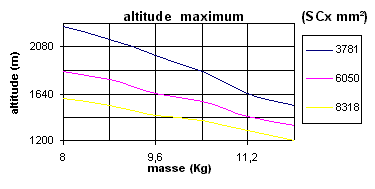
This is the most powerful of the motors currently available.
This can be used in rockets more than 100mm in diameter, of 20-40kg to reach 1.7 to 4km altitude & supersonic speeds.
Many clubs have damaged their rockets with this motor, typically at the end of the propulsive phase. Therefore, clubs who use this motor are advised to have a solid experience in experimental rockets & not to build the rocket too small.
The caribou was used to propel ![]()

| Overall length | 758 mm |
| Maximum diameter | 103.3 mm |
| Total weight | 11.230 Kg |
| Dry weight | 6.420 Kg |
| Propellant weight | 4.8 kg |
| Total impulse | 9161 Ns |
| NAR classification | M3780 |
| Average thrust | 3780 N |
| Burn time | 3.2 s |
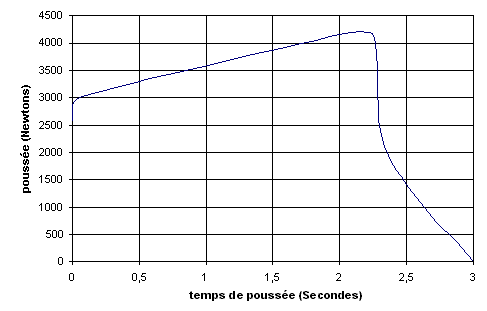
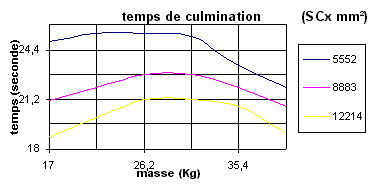
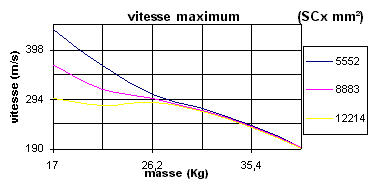
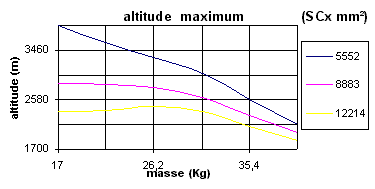
The information on the motors given here was taken from a document published by ANSTJ
"Les propulseurs des clubs scientifiques spatiaux et les ballons (Avril 1993)"
[obtain a motor] [Coke] [dik-dik] [koudou] [bambi] [faon] [isard] [chamois] [caribou]
[ home] [French societies] [security] [engines] [1977 - 1983 projects] [1983 - 1993 projects] [Paral'bol 1993 - 1996] [Céphéide 1996] [another sites]
http://www.multimania.com/gretss/